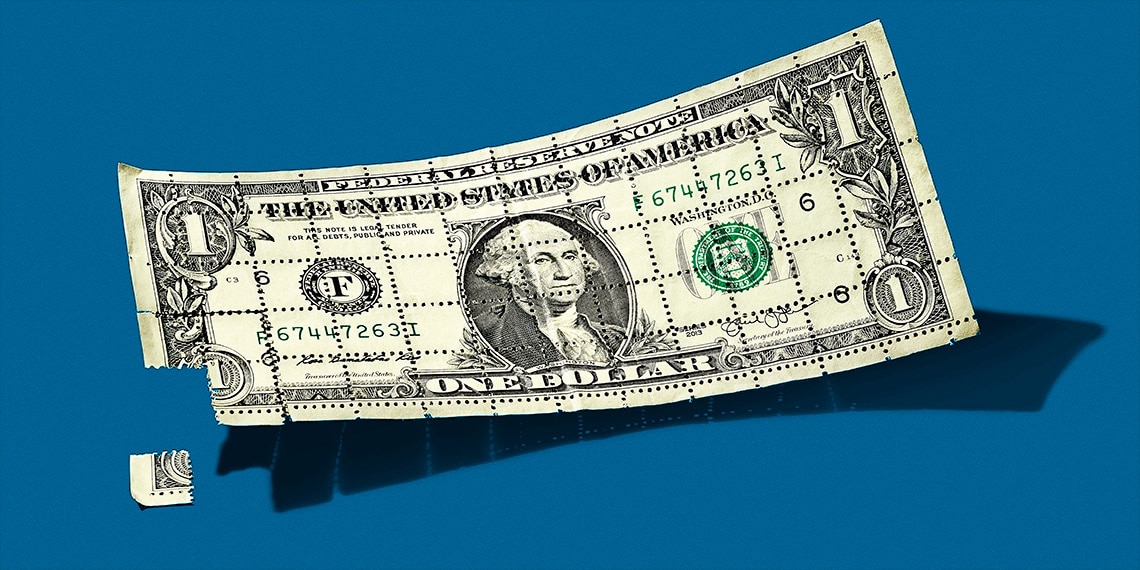
For most of us, the idea that we can improve some aspect of our lives a little bit (or a lot) each year is central to our worldview. While that belief prompts people to train for marathons or learn new skills that bolster their careers, the same attitude rarely applies to getting better at saving money.
That’s a mistake. There are a host of reasons why even moderate savings increases, such as 1%, can rapidly increase the total amount of money saved over a long period of time—which can help you achieve both your long-term and short-term financial goals. The reason that is the case comes down to the power of compound interest—which is the interest that you earn both on the money you save as well as the interest that money earns over time. If you put $10,000 in an investment and it earned 2% interest a year (without any more deposits), after 20 years you would have $14,859.27. So that would be a nearly $5,000 profit in interest alone.
Bumping up the amount you save and invest by just 1% each year can make the effect of compound interest even more dramatic. Cassandra Kirby, a partner at Braun-Bostich & Associates, a Pittsburgh-based wealth advisor, gives the example of someone making $100,000 who begins saving 10% of her salary each year. That person then increases the amount she saves by 1% each year until she is saving 15% of her salary.
Following that road map would make a big difference over 10 years. “Assuming you earn a 5% before-tax return, you would accumulate $175,161 over the next 10 years versus $132,063 if you left your savings at 10% for the entire 10 years,” she says. “That is a difference of nearly $45,000 over 10 years—imagine the difference over the course of your career if you were to take into account salary increases.”
How to Save More
Even though saving 1% more of your salary is a modest goal, it still requires planning and a clear-eyed view of how you’re spending your money. Indeed, step one is knowing exactly how much you stashed away last year. If you put money into an IRA, 401(k) or savings account, that should be an easy number to calculate; once you do that, all you have to do is increase it by 1% to calculate your new goal.
A good next step is to scour your past spending to find where you can make the necessary cuts to free up more money to save. Sam Brownell, founder of Stratus Wealth Advisors in Bethesda, MD, says the budgeting process often needs to include an objective third party, like a financial advisor, friend or family member. “The reason objectivity is important is that this person can help point out items, such as too many nights of ordering out, that the individual completing the budget might be reluctant to admit area problem,” says Brownell.
Obviously, every family’s spending habits are different, but there are many areas where unnecessary expenses can be turned into savings. Spending at restaurants is an obvious target, but exorbitant vacations, frequent wardrobe updates, subscriptions to streaming services (that you probably don’t watch) and gym memberships are all expenses that are ripe for trimming.
Slicing unnecessary expenses is a great way to boost your savings. But it’s also possible to increase your income and devote some portion of that increase to savings. For some people, the most realistic way to increase income is to ask for a raise. For others, spending a few hours each week doing independent freelance work can be enough to earn extra cash to save. No matter how you come up with extra money to put away, it’s critical to automate your increase in savings. “The adage ‘out of sight, out of mind’ rings very true with savings behavior,” says Kirby.
Where to Put Your Extra Savings
Once you have established a plan to save more, the logical question is where to put that extra cash? There are plenty of options, including 401(k)s, traditional and Roth IRAs, health savings accounts to cover healthcare expenses and 529 plans to help fund a child’s education.
There is no single correct answer about where to direct your savings. In fact, Brownell advocates using a mix of saving and investment vehicles. “We like to take a flexible approach to the three buckets of savings—emergency funds, shorter-term goals and longer-term goals,” says Brownell. “If possible, individuals should save to all three buckets by setting aside a constant percentage of their earnings.”
How much should go into each bucket is a function of individual circumstances, like how old you are, whether you have child care or education expenses, your career status and whether you own a home or are saving to buy one. To Brownell, though, everyone should be contributing to tax-advantaged 401(k)s, IRAs or Roth IRAs. For those who are just getting started in their careers, consistent investments in retirement accounts can deliver significant future benefits.
“Most people who are in their 20s can divert a larger percentage of their earnings toward retirement because they typically don’t have the monthly expenses that a married couple with children will have,” he says. “By starting early with retirement savings, the power of compounding is very beneficial, and it may be easier to stay on track for retirement if contributions have to pull back during a future period, like child-rearing.”
A former editor at Los Angeles magazine, Chris Warren has had work appear in publications ranging from Institutional Investor and Forbes to National Geographic Traveler, Oxford American and Greentech Media.
How long could you go without buying anything outside your budget?

